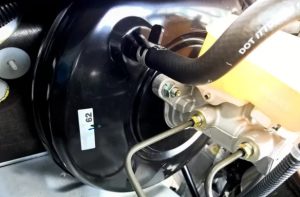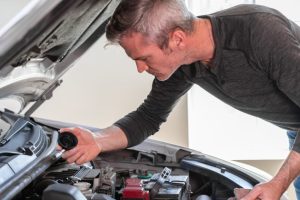A properly functioning brake booster is essential for safe and responsive braking. It reduces the amount of effort you need to apply to the brake pedal, making the driving experience smoother and safer. But like any component in your vehicle’s braking system, the brake booster can wear out or fail — often without warning.
In this article, we’ll explore the key symptoms of a bad brake booster, how to diagnose issues at home, and when to consider replacement.
What Does a Brake Booster Do?

The brake booster is a device that amplifies the force from your foot when you press the brake pedal. It works by using vacuum (or hydraulic pressure) to assist in pushing brake fluid through the master cylinder and into the brake lines.
There are two main types:
-
Vacuum brake boosters – Most common, using engine vacuum.
-
Hydraulic brake boosters – Found in heavy-duty vehicles and some ABS systems, using power steering pressure.
Without this assist, stopping your vehicle would require far more physical effort, and the brake pedal would feel stiff and unresponsive.
Common Signs of a Failing Brake Booster
Identifying the early signs of brake booster failure can save you from costly repairs and dangerous situations.
Table: Symptoms and What They Indicate
| Symptom | Possible Cause |
|---|---|
| Hard brake pedal | No assist from booster (vacuum or hydraulic loss) |
| Longer stopping distances | Reduced braking force due to booster malfunction |
| Hissing noise when braking | Vacuum leak in diaphragm or hose |
| Increased engine RPM when braking | Vacuum leak disrupting air/fuel mix |
| Brake warning light ON | Detected pressure loss or sensor fault |
| Poor engine performance | Large vacuum leak affecting combustion |
How to Diagnose a Failing Brake Booster
There are several ways to test whether your brake booster is functioning correctly. Many of them you can perform at home with minimal tools.
1. Vacuum Booster Function Test
This is the most common test for vacuum-type brake boosters.
Steps:
-
With the engine off, pump the brake pedal 4–5 times to release any residual vacuum.
-
Hold the pedal down and start the engine.
-
If the brake pedal sinks slightly, the booster is working.
-
If the pedal stays firm and high, the booster or vacuum supply is faulty.
2. Check the Vacuum Hose and Check Valve
-
Inspect the hose for cracks, splits, or disconnections.
-
Check the one-way valve between the intake manifold and booster. It should allow air to flow only in one direction.
3. Listen for Hissing Sounds
-
Start the engine and press the brake pedal.
-
A continuous hiss indicates a vacuum leak, likely from a torn diaphragm or damaged hose.
4. Test for Hydraulic Booster Problems
For hydraulic systems (common in diesel or larger vehicles):
-
Check the power steering fluid level.
-
If braking is harder when turning the steering wheel, it could indicate a pressure issue.
-
Inspect hoses and fittings for leaks.
When Should You Replace Your Brake Booster?
A faulty brake booster isn’t just inconvenient—it’s a serious safety hazard.
Signs It’s Time for Replacement:
-
You’ve confirmed no assist in braking.
-
A vacuum test fails or check valve is stuck.
-
The diaphragm inside the booster is torn.
-
There’s internal leakage in a hydraulic booster.
In many cases, a failing booster also puts extra strain on your brake master cylinder, leading to additional repair costs if ignored.
Brake Booster Replacement Cost
| Item | Estimated Cost (USD) |
|---|---|
| Brake booster (part only) | $80 – $250 |
| Labor | $100 – $250 |
| Total (average) | $180 – $500 |
Tip: DIY installation is possible if you have mechanical experience, but proper bleeding and adjustment are critical for safety.
Brake Booster Troubleshooting Checklist
Use this list to systematically check for issues:
-
Hard brake pedal when engine is running
-
Long stopping distances
-
Hissing noise from dash/firewall
-
Check vacuum hose condition
-
Check valve test (one-way airflow)
-
Confirm proper engine idle when braking
-
Inspect power steering system (for hydraulic boosters)
Need a Replacement?

Choosing a high-quality replacement booster ensures long-lasting performance and safety.
Buy Brake Booster online — Wide selection for all vehicle types, quality guaranteed.
Final Thoughts
A failing brake booster doesn’t always shout for attention, but its impact can be life-threatening. Hard brake pedals, hissing noises, and delayed stops are all early indicators. Regular inspection and quick diagnosis are key to preventing dangerous driving conditions.
Don’t ignore the signs—inspect and replace your brake booster if necessary. Whether you drive a sedan, SUV, or commercial vehicle, your safety relies on effective, reliable brakes.